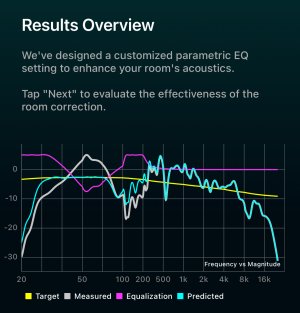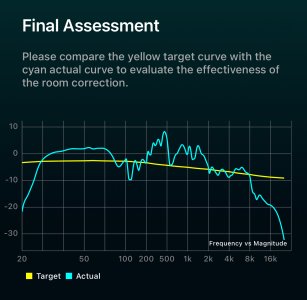I’ve tested it for about an hour and I’m a bit unsure if I can trust the measurements and whether the correction actually improves things.
My setup is connected as follows:
WiiM Pro

Optical
DAC

RCA
Integrated amplifier

Sub via regular preout (stereo)
Speakers + sub
One thing that puzzled me is that I seem to get the same measurement results whether the sub is on or off. It’s crossed over at 50Hz, and the measurements show a peak there. However, the peak is just as big when the sub is off.
I’ve set the settings to the BK curve and no correction from 200Hz. The measurement looks like this:
View attachment 9726

After correction, it looks like this:
View attachment 9727

The correction has removed the peak in the bass area, and there’s no doubt the sound is different. However, I’m not sure if I like it better. What makes me a bit uneasy is that the measurements were identical with and without the sub, making me question if the room correction is accurate enough before possibly using a UMIK microphone or something similar.
Any experiences or input?


